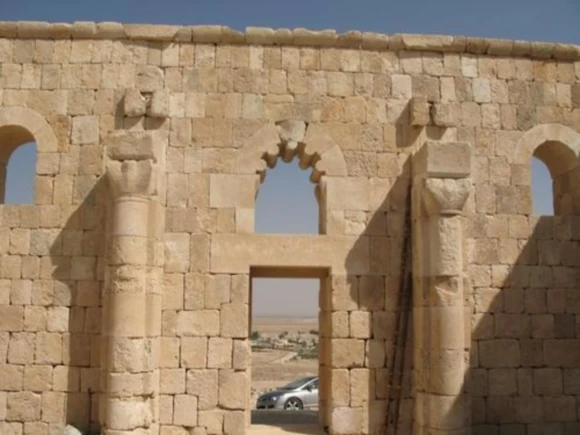Qasr Al-Hallabat
This considerable complex includes the qasr itself, a mosque, a large reservoir, cisterns, an agricultural enclosure and a bath house. New excavations at the qasr and the mosque have led to a reassessment of the history of the site.

This considerable complex includes the qasr itself, a mosque, a large reservoir, cisterns, an agricultural enclosure and a bath house. New excavations at the qasr and the mosque have led to a reassessment of the history of the site.
While pottery and inscriptions suggest a Nabataean phase, the present qasr probably began as a small 2nd-century Roman fort, one of many defending the Arabian frontier, the limes arabicus. It was built of local limestone and guarded the Via Nova Traiana, Later it was rebuilt on a plan four times the original size, with a square tower at each corner.
This second fort was destroyed in the 6th century, perhaps in the 551 earthquake, and was again rebuilt, probably by the Christian Ghassanid tribe. While the exterior still kept the appearance of a fort, the interior became a residence with an audience hall, decorated with marble and mosaics. Many black basalt stones were brought in from elsewhere for this rebuilding. Some bear sections of a long Greek inscription, an edict of Emperor Anastasius I (491-518), defining his ganisation of the Province of Arabia; but the stones were used with no regard for the inscriptions, which were plastered over.
The qasr’s greatest glory came in the 8th century, when the Umayyad transformed it into a palatial residence, lavishly adorned with carved stucco, frescos and vivid mosaic floors, a mosque was built beside it. And 2km away are the remains of a bath house (Hammam as-Sarah), very similar in style to that of Qusayr Amra.